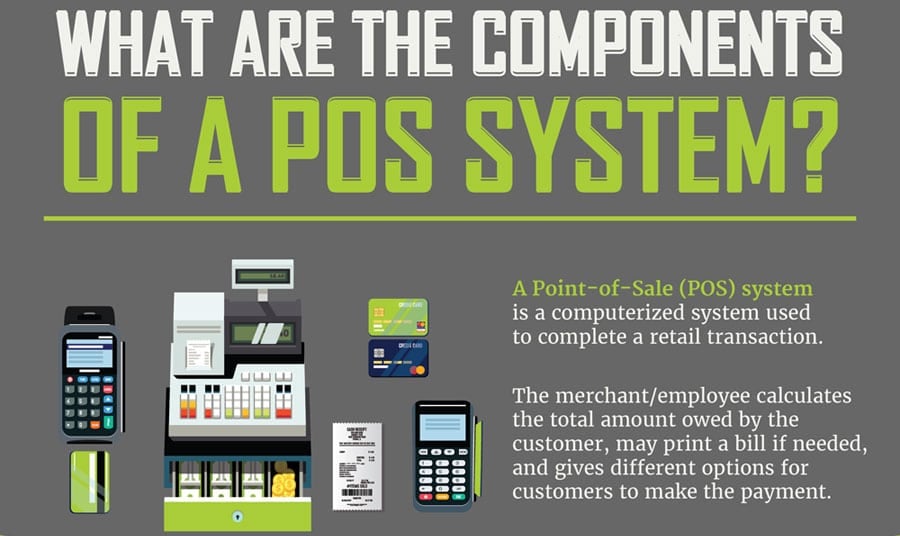
Thinking of the cost of a POS system? Our POS system cost guide breaks down the costs of software fees, hardware investments and payment processing. Suitable for all business sizes from small shops to big operations you’ll find the different cost elements to help you decide.
Quick Facts
- POS costs are split into software costs, hardware investments and payment processing fees, pricing varies on feature set, business size and transaction volume.
- Hardware costs for POS such as card readers, cash registers, barcode scanners and receipt printers can range from under $50 to over $2000, businesses have to decide to buy or lease, each with its own long-term costs.
- Credit card processing fees are negotiable based on transaction volume and type, businesses need to be aware of hidden fees like extra costs for extra registers or terminals, support, training and system upgrades.
- Compare POS Systems.
POS System Costs

Table of Contents
When it comes to POS system costs there are three main elements: POS software costs, POS hardware costs and payment processing fees. The software is the backbone of any POS system and determines its core functionality.
Monthly costs for POS software can range from $15 to over $100 depending on the feature set and business size.
Hardware investments are the physical part of your POS system. This can be tablet based systems, full countertop setups or even mobile card readers, investments can range from $300 to $2,500.
And finally, payment processing fees are part of the overall POS system costs and vary by provider and transaction volume. It’s not just about the initial investment.
You also need to consider the ongoing operating costs which includes processing fees. This is important to get a full picture of the total POS system investment.
POS Software Options

Choosing from the many POS software options can be daunting. Pricing can range from free to $400 per month for the high-end options, with different subscription tiers offering different features.
Small business POS software plans start at $15 per month and go up to $100 per month with extra costs per terminal.
But costs and features are only half the story. A POS system that includes automation for accounting, employee supervision and inventory can reduce manual workloads.
Cloud-based POS systems are the favorite in this regard as they have lower initial startup costs and less IT maintenance requirements compared to on-premise solutions.
When choosing POS software options, you also need to consider licensing options and user account policies. These often determine the cost, usage terms and flexibility and accessibility for staff operations.
And don’t forget about ease of use. A user-friendly POS system reduces the training time and increases in-store efficiency and overall team productivity.
Free POS Software
In the world of POS software free options have their place. For example, independent retailers can get a basic retail POS system for free.
This can help streamline their operations and customer service. Options like Square and PayPal Zettle, which offer mobile card readers, have made POS systems more affordable for small businesses.
While these free plans can reduce upfront costs for retail businesses there’s a catch. They often come with higher transaction fees which can offset the cost savings from the free software. So you need to factor these costs in when choosing a POS system for your business.
Paid POS Software
Next up the pricing scale we have paid POS software plans. These offer:
- Deep inventory management
- Reporting
- Marketing
- Loyalty programs
- E-commerce integration
- Essentials for restaurant operations.
The cost for these subscriptions can range from $29 to over $300 per month per terminal, scaling up based on business size and the features needed including potential upfront licensing fees. But the investment in these features can pay off.
For example, sales trend analysis enabled by paid POS systems can guide businesses towards high ROI activities and streamline operations to reduce overall costs.
Plus, most POS systems especially the paid ones don’t have user limitations so unlimited staff can use the point-of-sale system across licensed terminals. This is another reason to consider such systems.
Hardware and Expenses

After software comes the physical part of your POS system – the POS hardware. This varies depending on your business needs and can include:
- Mobile card readers
- Cash registers
- Barcode scanners
- Receipt printers
The costs for these can range from under $50 to over $2000.
Cash registers for example can range from entry level options under $200 to high end options with magnetic card readers and touchscreen terminals which can exceed $2000.
Bar code scanners needed for retail operations can cost between $50 to $300 each, card readers are $39 to $49 and receipt printers are $289 to $399.
The complexity of the hardware setup can increase the initial POS system cost as you need compatible equipment or additional accessories. But again, these costs are worth it for the long-term efficiency and productivity of your business.
Buy vs Lease Hardware
When it comes to buying POS hardware businesses are often faced with the decision to buy or lease. Renting POS hardware means lower upfront costs so it’s more accessible for new businesses with limited startup capital.
Leased POS systems come with ongoing customer support and troubleshooting included which is good for businesses without technical expertise.
Leasing also gives more flexibility as you can switch to newer technology more easily without the financial loss from previous investments. But leasing can be more expensive in the long term due to monthly fees, service charges and interest rates associated with the lease.
On the other hand, buying POS hardware outright means more long-term profitability as you avoid continuous monthly payments and lease agreement changes.
Owners of purchased POS systems can customize their hardware and software to suit their business needs whereas with leased systems. Plus purchased hardware comes with equipment guarantees or warranties that covers out of pocket expenses for hardware issues. But remember buying means higher upfront cost.
POS Hardware Financing
For businesses that can’t afford to buy hardware outright financing options are a relief. They allow you to spread your investment over a year or more and ease the financial burden of the initial investment.
Some providers even offer free or discounted mobile readers and cash register equipment upon sign up and payment plans for more expensive items.
Credit Card Processing Fees

Now let’s dive into the murky waters of credit card processing fees. These fees are determined by the merchant services provider and some providers charge flat rate while others charge variable transaction fees based on the payment method.
Businesses that process more credit card transactions can get lower per transaction rate.
Businesses that process more credit card transactions can get lower per transaction rate especially if they exceed certain thresholds in card payments each month.
The type of transaction also affects these fees. For example, swiped card transactions have lower processing fees compared to keyed in transactions because of lower risk of fraud in swiped payments. So, to get the best credit card processing rates businesses should:
- Be industry savvy
- Know their transaction patterns
- Choose a pricing structure that suits their business and volume.
Additional Costs and Fees to Watch Out For
When budgeting for your POS system, it’s important to consider not just the visible costs but also the hidden ones. POS providers may charge extra for:
- Integrations with other business systems
- Add-on features such as email marketing or loyalty programs
- Services like SMS that adds to the overall cost beyond the initial quote.
Companies may also be charged monthly fees for each additional register or terminal. These fees can range from $9.95 to $40 per register so if you have multiple points of sale this can multiply the cost.
Another cost often overlooked is support and training. Businesses need to factor in the cost of vendor support and the need for periodic software upgrades or replacements which can add to the long-term software cost.
POS System Costs by Industry
POS system costs are not one size fits all. It varies across different industries like retail, restaurants, cafes, spas and food trucks so it’s important to know the pos costs for your business and choose the right pos provider.
For example, small retail stores can expect to pay between $15 to $100 per month for a single register setup, while larger stores with multiple registers can pay between $100 to $300 per month.
Food trucks need a mobile, wireless POS system that takes up minimal space, usually a single terminal and card reader and sometimes handheld terminals.
Spas, salons and wellness businesses have their own set of requirements. Their POS systems usually have:
- Appointment scheduling
- Invoicing
- Retail
- Recurring membership
- Booth rental management
The common hardware investments for these businesses are customer facing tablets for intake forms and tablets for client notes.
For cafes they can expect digital payment processing fees to be 2% to 3% for in person payments and 3.5% to 5% for online orders with online payments.
Spas, salons and wellness businesses can expect payment processing fees to be 2.5% to 4% depending on sales volume and business type.
Choosing the Right POS for Your Business
Choosing the right POS for your business is a delicate balance of features, scalability, pricing models, user friendliness and customer support options.
First and foremost, make sure the POS system has the features that matches your business needs such as inventory, employee management and integration with ecommerce platform if needed.
Next, when choosing a POS consider:
- The system is suitable for your business size, from basic hardware for small retailers to advanced setup for larger operations.
- It should be able to grow with you.
- Review the different pricing models offered by the POS system providers, interchange-plus, tiered pricing, flat rate pricing and find one that fits your business budget and operations.
Lastly, when choosing a POS system consider:
- Choose a system that is user friendly, minimal technical support needed.
- Make sure the provider has comprehensive customer support and has been around for a while.
- Invest in your POS system’s cybersecurity to protect customer data and prevent breaches.
Ways to Reduce POS Costs

While POS systems are an investment, there are ways to reduce the costs. One way is to implement a zero-fee credit card processing program where the transaction costs are passed on to the customer. This will help businesses reduce their processing fee.
Another cost saving tip is to go for annual subscriptions for POS software instead of monthly payments. Many providers offer discounts for annual plans which can result to big savings in the long run.
Conclusion
In summary, POS system cost is a balancing act of software, hardware and payment processing fees. From free and paid software to buying or leasing hardware, businesses have options to fit their needs and budget.
Choosing the right system is assessing features, scalability, pricing models and user friendliness and being aware of the hidden costs. By considering these, businesses can make an informed decision that fits their operations and financial capacity.
Frequently Asked Questions
What is the average cost of a POS system?
The average cost of a POS system is between $0 and $2,000 for the first year, including hardware, software, and installation fees. After the first year, the cost may be around $1,000 per year, depending on business size and features.
How much does POS charge per transaction?
POS charges can range from 1.5% to 3.5% per transaction, in addition to a flat fee. For small businesses, a flat-rate payment processing option may be more suitable, considering these costs.
What POS system is the cheapest?
The cheapest POS system for small business is Square. It offers a free plan with basic features, making it a cost-effective option.
How much are POS maintenance fees?
POS maintenance fees can range from $29 to $300 per month, depending on the type of business and the number of terminals. Additional expenses such as hardware purchases, software licensing fees, and payment processing fees should also be considered.
What factors influence POS system costs?
The cost of a POS system is influenced by software, hardware, and payment processing fees, with the total cost typically ranging from $0 to $2,000 initially and between $500 and $1,000 annually, depending on business size and additional features.








